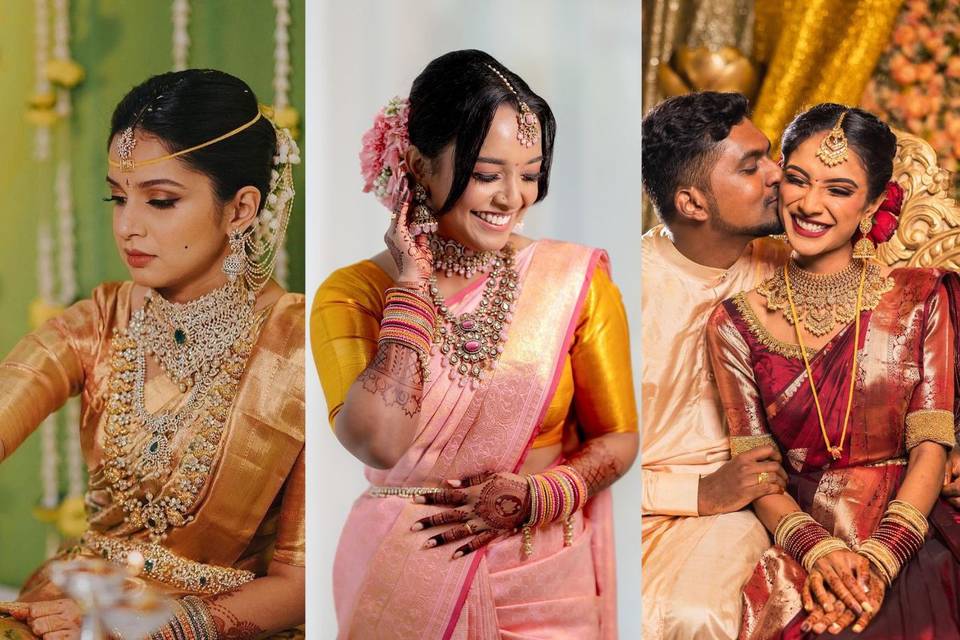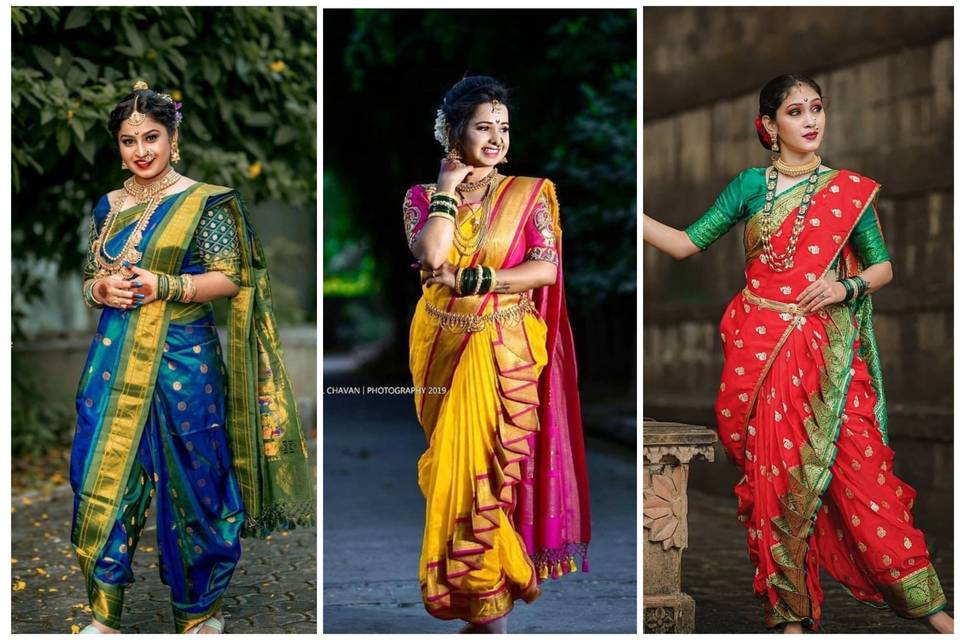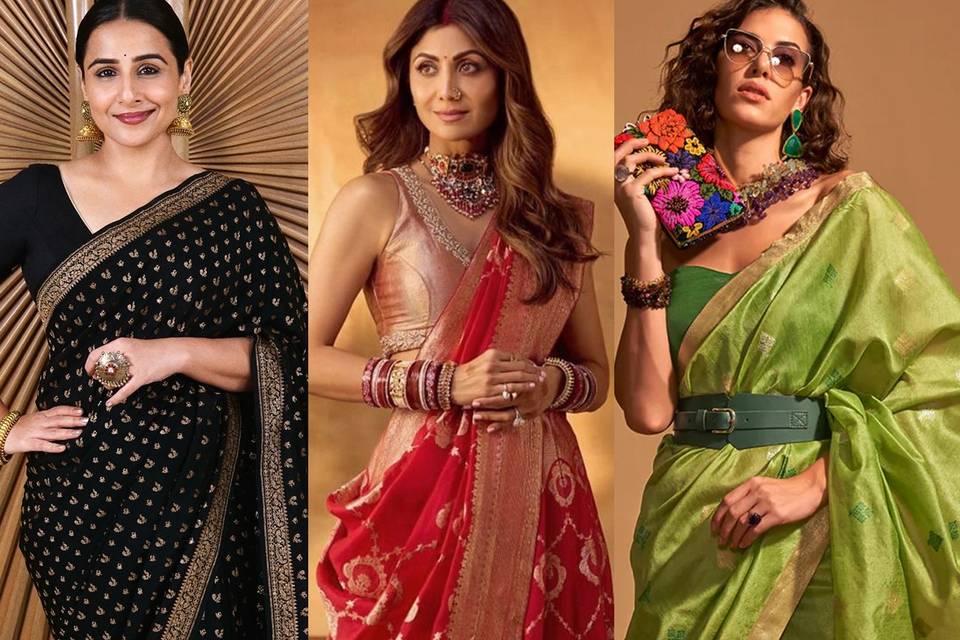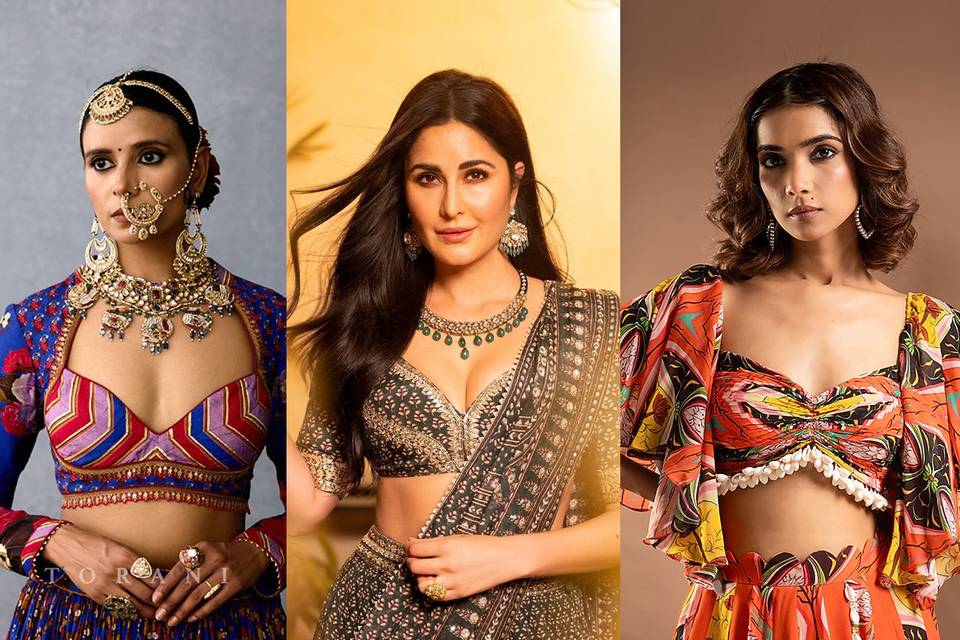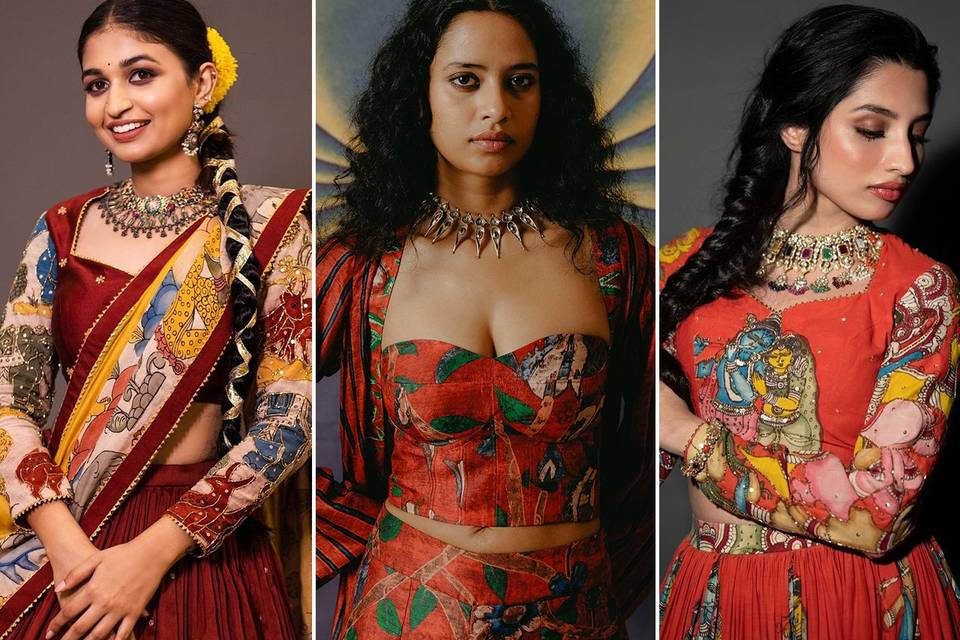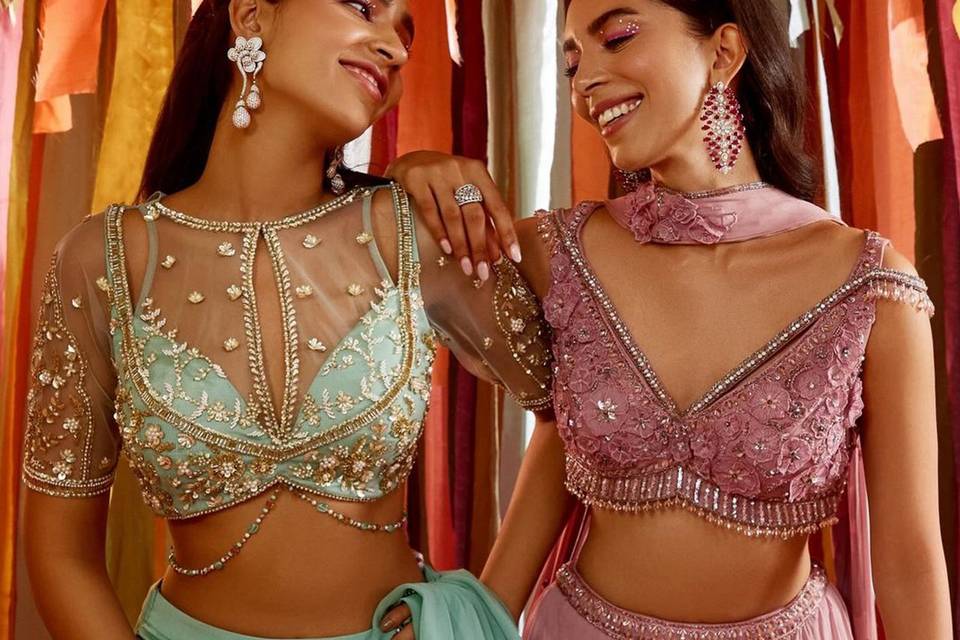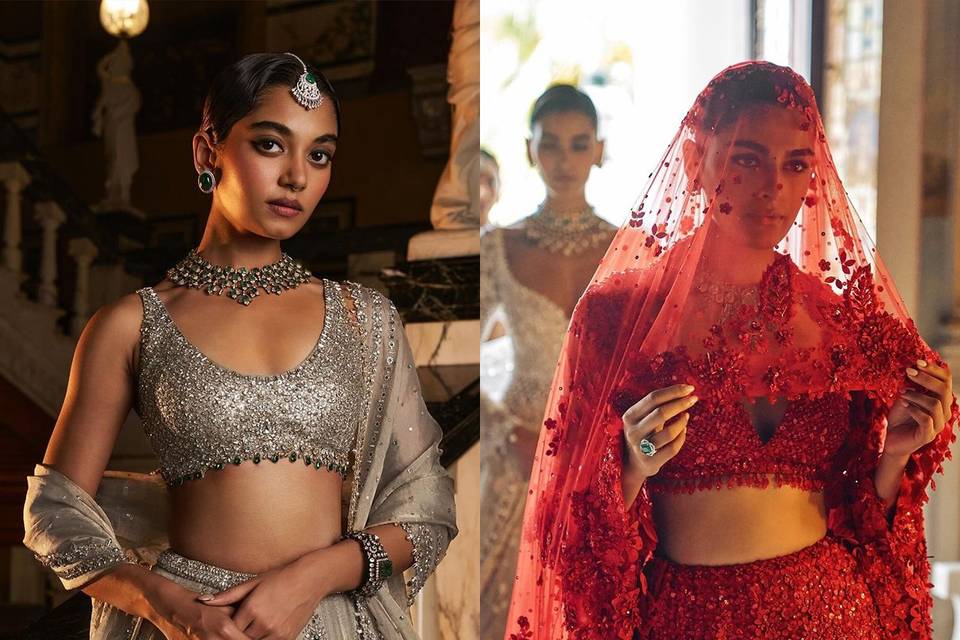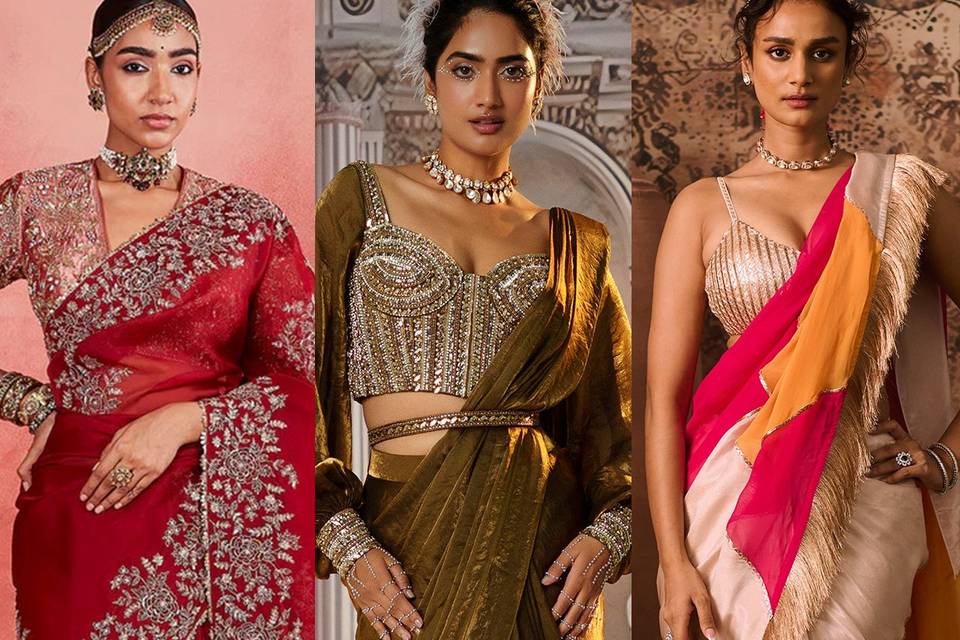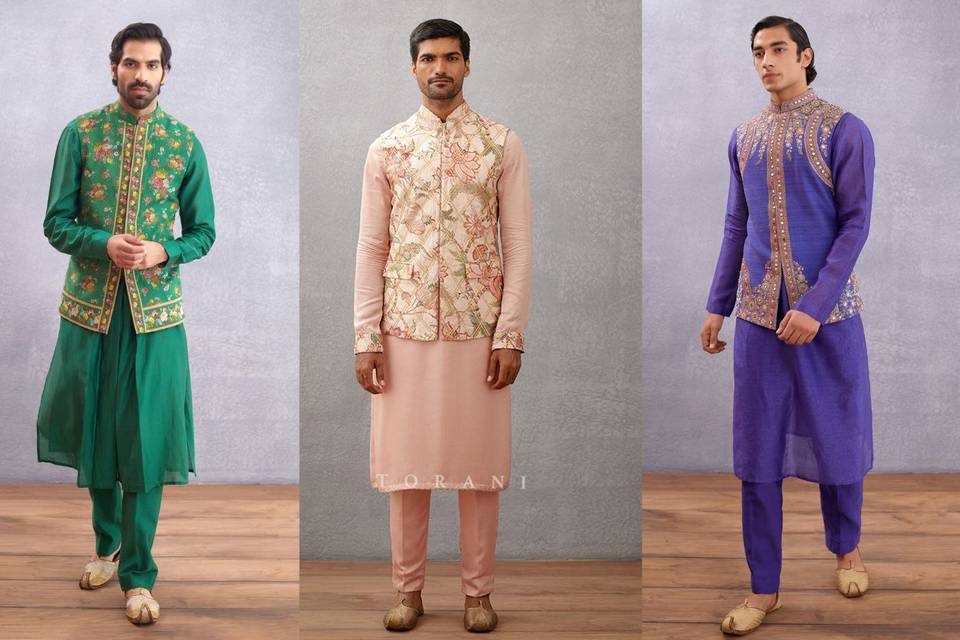5 'How to Wear Saree in Different Style' Tutorials That Can Give Your Bridal Drape A Regional Turn
There’s nothing that can beat the grace of a saree; only if its draped to perfection. Not only is a saree stylish but it's easy to carry too. Here’s our tutorial on how to wear saree in different style.
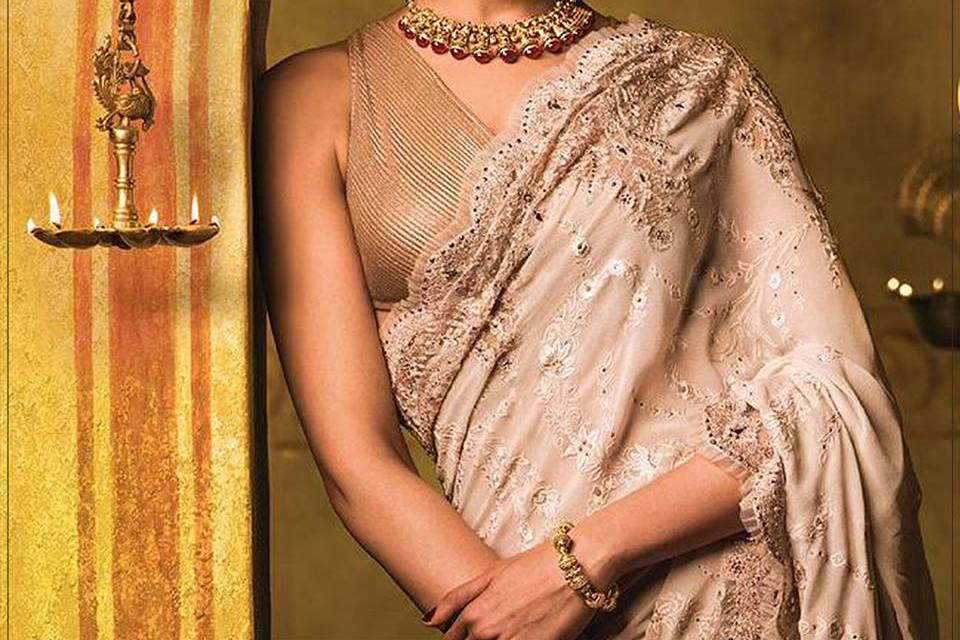

A saree looks great on every body type. Wonder how? Choose the drape that carefully conceals and elaborates your body, to transform you into a diva. In fact, you can pick up a different style for various occasions - be it a wedding, kitty party, or social gatherings. So ditch your regular style of draping a saree and choose one from the unique options we’ve listed below.
Follow our step-by-step tutorials and ace how to wear saree in different style variations like a pro!
1) Ulta Pallu Style
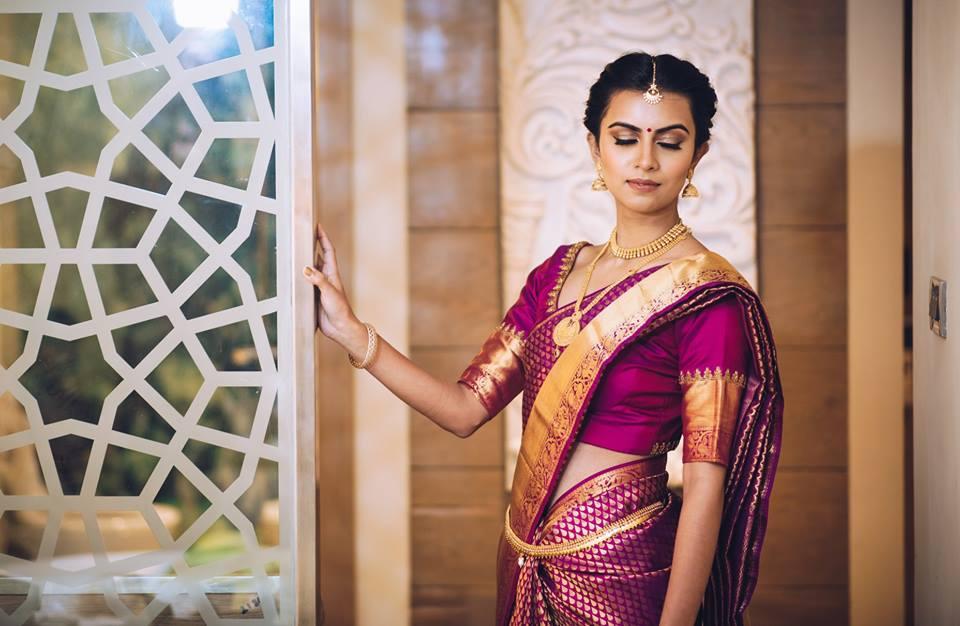
This is the most common and simple saree draping style. You can try this classic drape with any saree - right from cotton, silk, chiffon to georgette and Khadi. And, to give this ethnic look an edge, you can accessorise it with a belt.
In fact, when quizzed about how to wear saree in different style forms, the Ulta Pallu has a lot of variations, depending on the region that it is taken from.
Here’s how to drape it right:
1. Tuck and Twirl
Start from the non-pallu end of the saree and tuck the top edge on the right side of your petticoat or a saree shaper. Now while taking it towards the left side, wrap it around the back of your waist to the centre (near the belly button) and tuck it in neatly.
2. Making Pleats
Once the saree is tucked in, make 6-8 pleats of 5-6 inches each at the centre and tuck them in the petticoat. To keep the saree intact, pin-up these pleats at the centre. Also, make sure your pleats face towards the left.
3. Floating Drape
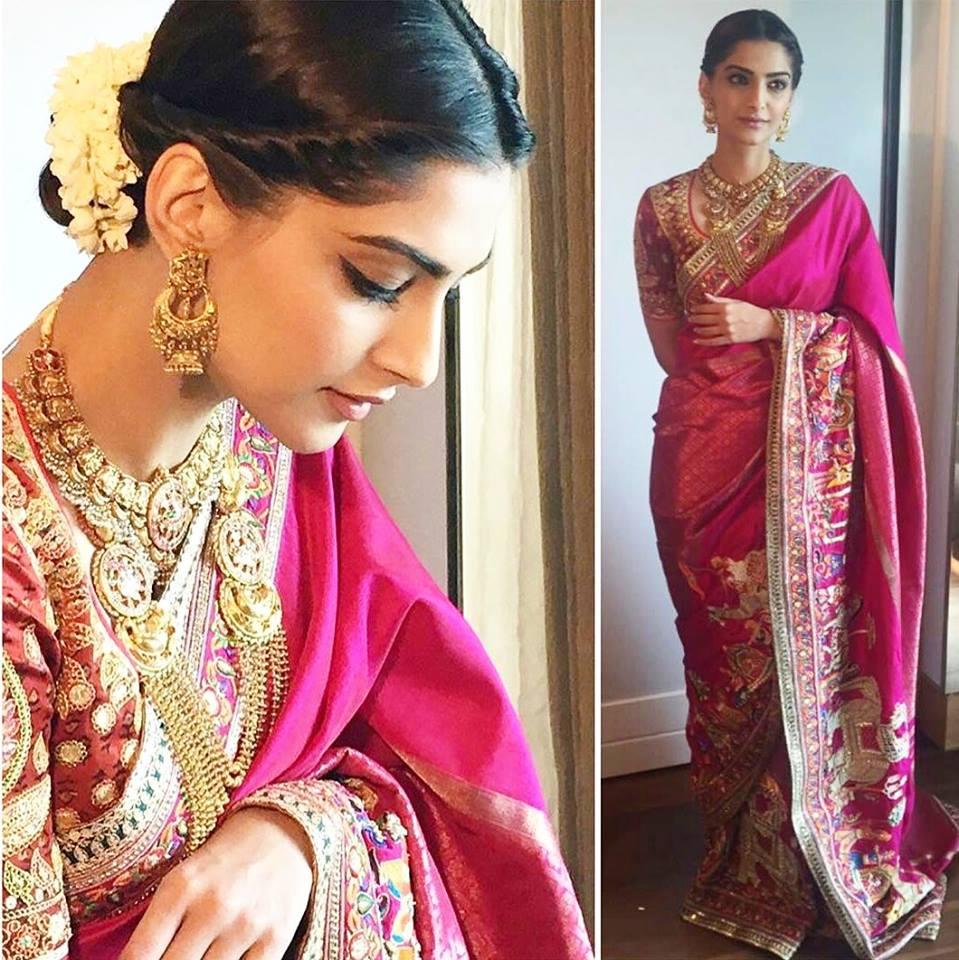
Now bring the open drape across your back to your front from the right side, without tucking this time. For floating look, bring the pallu towards the left side of your shoulder from under the right arm. Pin it on the left shoulder.
4. Pleated Drape
However, if you wish to have a pleated pallu, hold up the width of your pallu section and make pleats of about 5-6 inches each. While holding the pleats, bring the drape from beneath the right armhole and pull it up towards your left shoulder. As you place the pleats, make sure at least one-metre length falls from your shoulder point.
Pin it on your shoulder so that it remains intact.
You are ready to flaunt this classic style looking absolutely stunning. And help everyone through with this how to wear saree in different style tutorial.
2) Bengali Style or Athpourey Saree

Think Athpourey saree, and you’ll instantly picture Bengali women in their quintessential ‘Garad’; a traditional white saree with red pallu, accessorised in beautiful red and white bangles and their trademark red bindi.
This is the most recognisable and distinct style of draping a saree as unlike the modern day saree, a Bengali saree style has a set of box pleats and two pallus draped over both the shoulders. Traditionally, women used to tie their bunch of keys to their pallu thrown over the right shoulder.
To flaunt this style you can choose a traditional yet timeless Bengali Tant, Jamdani, Baluchari or a handloom cotton saree.
Here’s how to drape Athpourey Saree:
1. Draping and Tucking
Identify the non-pallu end of your saree and wrap it around starting from your right towards left and then covering back to the centre (front). Tuck it neatly in the petticoat.
2. Making Pleats
Now, make wide pleats that start at the left side of your belly button and fold it in a way that it ends at your right leg. Please remember that the length of pleats makes a lot of difference to this style, so make sure they are broad and box-like. Unlike the other techniques, you need two of them for a Bengali style. Again, tuck them neatly in your petticoat.
3. Left Pallu Setting
As mentioned earlier, Bengali saree has two pallus; one on each shoulder. So, to start with, hold the pallu section of your saree and start making thin pleats. The size of the pleats should be about the size of the border. You may even clip these pleats so that they remain intact.
Now, place this pleated section over your left shoulder and ensure that the length of the saree touches the ground at the back. Pin it up neatly and then bring the right side border of the pleated pallu towards the right shoulder. Stretch it under your armhole and tuck it near the right side of your hip.
4. Right Pallu Setting
Take the end of the pleated section at the back and bring it to the front from under your right hand. Unclip your pleats at this stage. Now take a tip of the pallu and throw it over your right shoulder neatly. Pin it up at the back of your right shoulder, and you are ready to rock this gorgeous style!
3) Gujarati or Front Drape

This is also known as the Seedha Pallu style as the drape comes in the front. Besides Gujarat, this saree draping style is also popular in Uttar Pradesh and Odisha. If your saree has some intricate work on the pallu or if you are wearing a heavily embellished saree, go for this style.
Here’s how to drape it right:
1. Tuck and Twirl
Start from the non-pallu end of the saree and tuck the top edge on the right side of your petticoat or a saree shaper. As you take it towards the left side, wrap it around the back of your waist bringing it to the centre (near the belly button) and tucked in neatly.
2. Making Pleats
Once the saree is tucked in, take the width section of the end drape and make pleats (approximately 5-6 inches each) of the whole width. Gather them in a way that the top border forms the first crease.
3. Setting Pallu
While holding on to the pleats in vertical, bring them around your back waist from left side to the top right back shoulder, thus allowing it to fall at your front in a length less than a metre. Pin up the pleats at the shoulder point.
Now pick up the first border edge and pull it across your left side taking it under the left armhole and tuck it at the back of your left waist.
4) Maharashtrian Nauvari or Paithani Dhoti Style
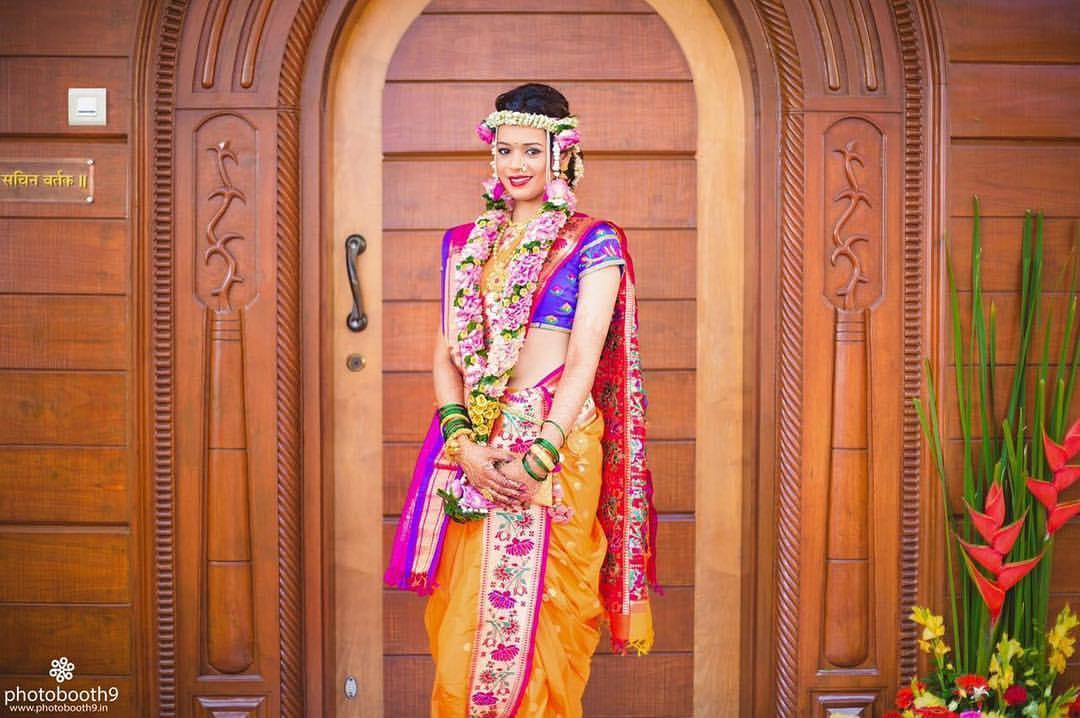
Image courtesy: Photobooth9
The Nauvari or the 9-yard saree is iconic of Marashtrian style. This style looks like a Dhoti with the upper part worn like a regular saree. You do not need a petticoat to drape a Nauvari, although you can wear shorts or knee-length leggings underneath the saree.
Here's how to drape a traditional Nauvari saree, a page straight from how to wear saree in different style formats:
1. Make A Knot
Take the non-pallu end of the saree, while holding it on your right side. Take it to your left and then bring it around your back and then tie a tight knot on the right side with the right end.
2. Make Pleats
Take a round of the saree and make 6-8 pleats of 5-6 inches each at the centre and tuck them neatly. Make sure your pleats face towards the left. Now take the open edge of the saree; the pallu section and make thin pleats of the width of the border.
Bring the pleated drape from the left back towards the right side and bring it in front from under your right armhole to the left front shoulder. Pin it up so that it remains intact.
3. Wrap Like A Dhoti
Now take the centre mid pleat of the lower edge and push it through between the two legs and pull it up until you reach your back mid. Now neatly tuck it in. Make sure while doing this you keep the border edge in front view.
Remember that the Maharashtrian style sarees are worn an inch above your feet, so anything higher or lower than this might spoil the look.
5) Madisar from Tamil Nadu
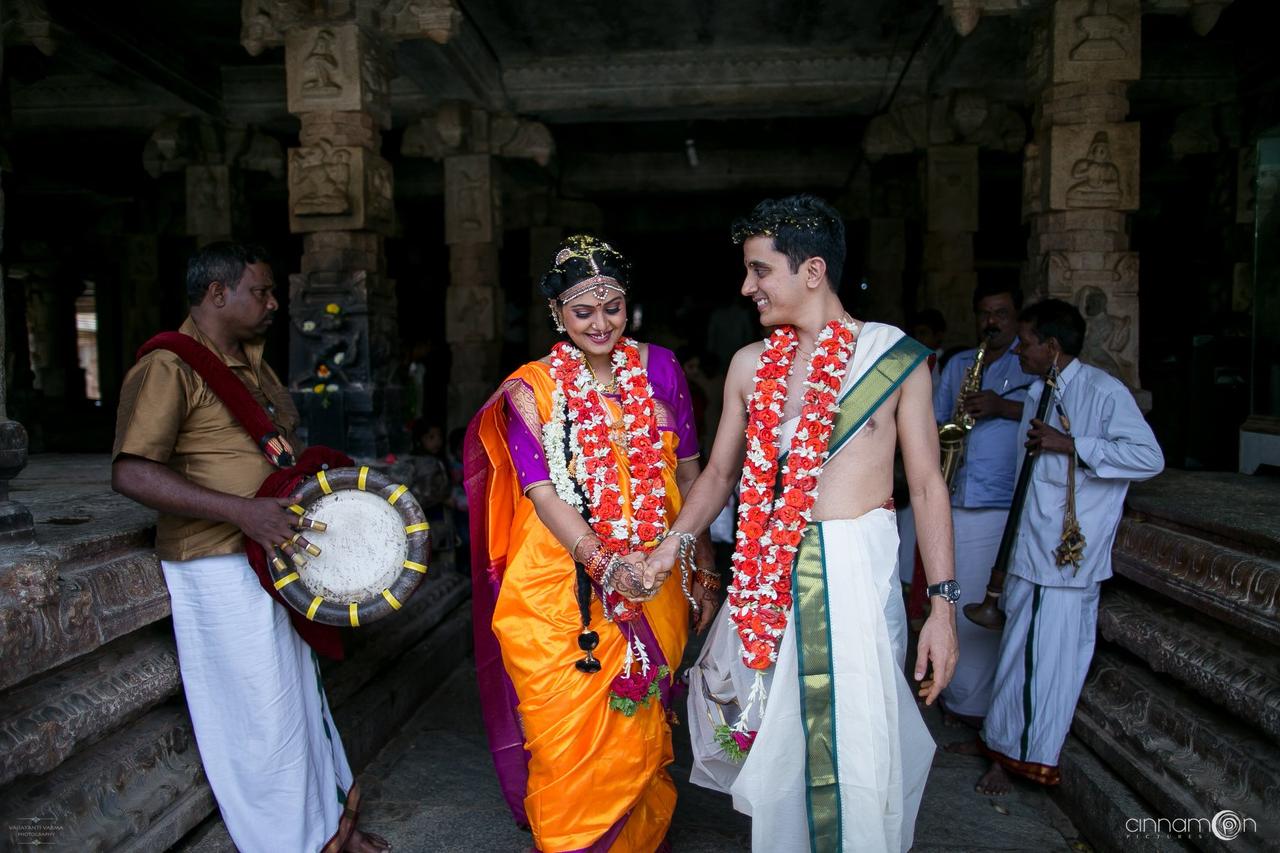
Traditionally, the married women of the Brahmin community of Tamil Nadu used to wear this style. However, these days it's worn only on special occasions and festivities. Like the Maharashtrian drape, a Madisar style too requires a saree that’s about 9-yards as compared to a common 6- yards saree.
Both Iyers and Iyengars wear Madisars differently; Iyers wear the pallu over the right shoulder, but Iyengars wear it over the left shoulder. Both ways do require an ample amount of patience, especially if this is your first time trying how to wear saree in different style tutorials.
So, here’s how to drape a Madisar style:
1. Making pleats and wrapping saree
Take the non-pallu end of your saree and make 8-10 small pleats roughly three fingers wide. But the number of pleats depends on your waist size. Now take this bunch of folds almost to the centre of your back and hold them firmly in place.
Wrap the saree anticlockwise around your body while allowing it to run over the pleats in such a way that the fold-tips is an inch higher. Bring the running end of the saree to the front to your navel.
2. Stamp and Knot
Then stamp the right side end underneath your left heel to hold the saree in place, while you go about tying it. Take a small portion of the saree that's now at your front and knot it into the previous fold, on your navel. Make a firm knot, as this will hold the piece together.
3. Create Front Folds
Now, gather the remaining loose fabric and measure from the left-hand side the length of the saree that you can drape to your waist from this point. Using this as a measure, tuck the saree to the left side of waist, gather again and take it between your legs to your back. This entire exercise is what makes this how to wear saree in different style truly unique.
4. Wrap It To Make A Dhoti
Attach the end from the front of the saree to the back, letting the border fall in one straight line from between your knees to your mid-back and tuck it in. Take a segment of this fabric (at your back) and attach to your right side, like you had done earlier to your left. Then, bring it to your front, draping it once across your lap and over to the right side shoulder.
5. Tuck Pallu
Fold the pallu into two folds with the border showing up on top. Pin it up to your blouse at the shoulder. At last, tuck your pallu into your right waistline.
So, now that you have some idea on how to wear saree in different style drapes, try draping it and see for yourself how easy it is.
Do you know all of these how to wear saree in different style versions? Let us know through comments.

